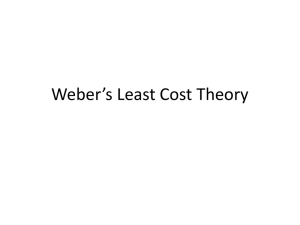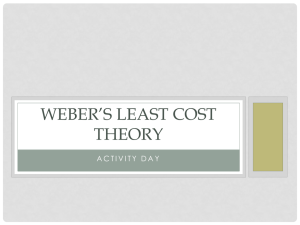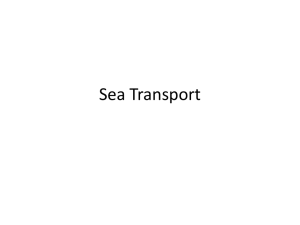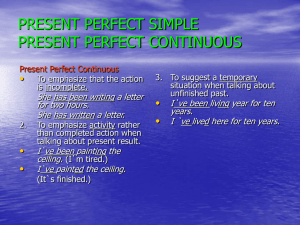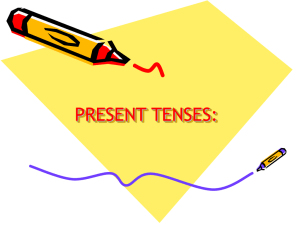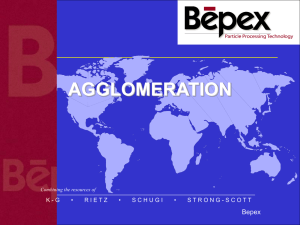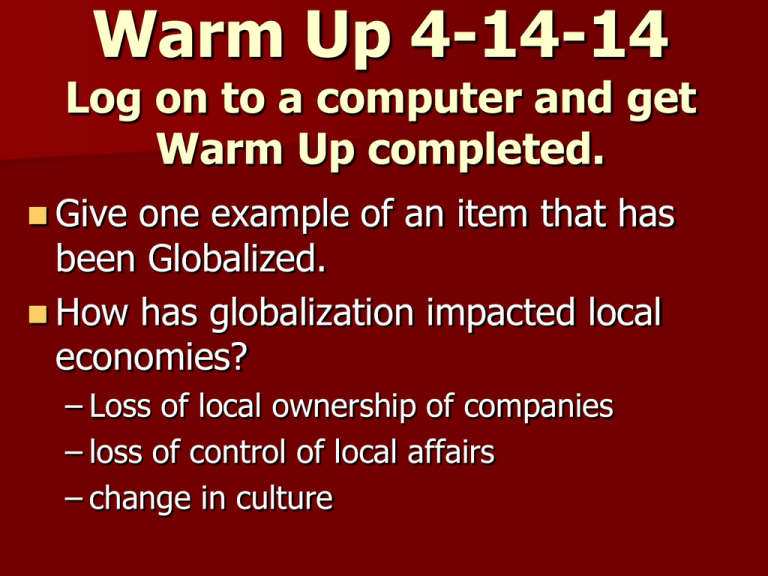
Warm Up 4-14-14
Log on to a computer and get
Warm Up completed.
Give
one example of an item that has
been Globalized.
How has globalization impacted local
economies?
– Loss of local ownership of companies
– loss of control of local affairs
– change in culture
Task for Today
Sign up and log onto a computer
Research Immanuel Wallerstein’s world systems
theory.
– Define the theory
– What are the strengths?
– What are the weaknesses?
Research Core-Periphery Model
– Define the Core and provide examples
– Define Semi-periphery and provide examples
– Define Periphery and provide examples
What is the North/South gap (Brandt line)?
Define Dependency Theory
Pick Up the Hotelling’s Model handout, read and
complete the questions.
Warm Up 3-22-11
Outsourcing is the process of producing parts
or products in a foreign country for domestic
use or sale.
Give an example of outsourcing and 2
reasons why a country would outsource.
– take advantage of low cost over-seas labor
– create competitive market for parts and supplies.
– provide more flexibility for companies.
– some countries have less restrictive
environmental codes and regulations.
Warm Up 3-21-11
Explain
the connection between
industrialization and the
Demographic Transition Model
(DTM).
– Stage 3
– Mechanized farming replaces many labor-intensive jobs
– People to move to new industrial and urban areas
– Over time, the country’s birth rate decreases as the
country industrializes
Alfred Weber
Least-Cost Theory
Alfred Weber (1868-1958)
Alfred Weber was a German sociologist
and philosopher.
– Was a part of the Intellectual Resistance against
Nazi Germany.
He formulated the Theory of Industrial Location
(Also known as the Least-Cost Theory).
Where will factories locate that is the lowest
cost to them?
– Like von Thunen (location of agricultural activities)
Least-Cost Theory
Developed to resolve the problem of opposing
locational pulls.
Therefore, it aids in determining where a processing
plant will be located to maximize profits and minimize
costs.
– The theory that an industry will be located where the
transportation costs of raw materials and the final product is at
the least.
– A Decision making model of the best location of a particular
industry given the material, amount shipped and transport costs.
Determines industrial location of the manufacturing
plant.
Least-Cost Theory
Weber devised a technique involving isotim and isodopanes.
In order to identify the points of least cost.
The isotim lines connect the points of equal transport cost.
Where R or S stand for Raw Materials
M stands for Market
http://peo
ple.hofstra
.edu/geotr
ans/eng/c
h7en/conc
7en/weber
locationtri
angle.html
Least-Cost Theory
Site chosen must consider
the following:
1. Moving raw materials to factory
2. Moving finish products to the
market
3. Creates a balancing act of the best
location possible.
Least-Cost location is also
based on Alfred Weber’s
formal assumptions.
These are not the case for all
situations.
Assumptions
Uniform/Isotropic Plain: Operates in one country with
an uniform plane and equal transportation paths.
– topography
– climate
– Technology
– economic system
One finished product is considered at a time.
The product is shipped to a single market location.
Transportation cost may vary as they are a function of the
weight of the items shipped and the distance they are
shipped.
– Example: Heavy and Far (cost lots of moolah!)
Assumptions
Labor is not mobile.
Labor is available in unlimited quantities.
There is labor at any production site selected.
There is equal opportunity to purchase the product.
The raw materials are:
– At a fixed location
Market location where consumption occurs
– At a fixed location
Factors
With these assumptions, the
location is driven by four factors
to determine spatially
variable costs.
Transportation, Labor,
Agglomeration, Deglomeration
Transportation
The location of the industry will be located in an area
where it ensures the cost will be lowest for:
– Moving raw materials to the processing location
– Moving finished products to the market
Costs of transportation are affected by distance the
product is shipped and the weight of the product when
being shipped.
Considered to be the most important factor!
There are also cases where a company has more than 1
mode of transportation.
This is known as break-in-bulk locations.
– Example: San Francisco, California
– Methods of Transport: Ports, Rail, Air, Highway
Labor
Cheap Labor is the most important because the higher
labor cost are the lower a companies profit.
Considered the most expensive factor for LCT.
The profits of a company are reduced as the cost of labor
increases
In some cases an industry may perform better farther
away from the market and raw materials, due to the
availability of cheap labor.
Higher labor costs reduce profits, can affect
location of industry, regardless of raw
material and market locations.
– Example: Outsourcing textiles overseas
Labor
Employers look for:
–
–
–
–
Low Wages
Little unionization
Young employees (Few healthcare costs)
Female employees (Thought to be less demanding
and more expendable)
If an industry moves to a place to access lower
labor costs, even though transportation costs
increase is called the substitution principle.
Agglomeration
Agglomeration: the concentration of businesses in
one particular area.
Also called an agglomeration economy!
It occurs when there is a demand for services that the
population needs (school, hospitals, grocery stores).
They provide assistance to each other through shared
talents, and services. Typically results in lower prices!
When a large number of companies cluster in
the same area and can assist each other
through shared talents, services and/or
facilities.
– Example: Research Triangle Park
– Example: Michigan Auto Industry and PA steel industry
Deglomeration
When an agglomerated region becomes too clustered
or too crowded from cumulative causation, then
there are negative effects.
– Pollution, Traffic, Lack of Resources or Labor
Industries might then choose to move for more space
in a process called deglomeration or the “unclumping”
of factories due to the negative effects and higher
costs of industrial overcrowding. Markets can also
become oversaturated with a particular industry
forcing businesses to relocate or shut down.
Weight-Gaining and Weight-Losing
Weight-Gaining
– The finished product(s) weight is more than the raw materials
– Cost for shipping the finished product are greater than that of the
raw materials.
– Industry location would be the closest to the market!
Weight-Losing (Also known as bulk-reducing)
– The finished product(s) weight is less than the raw materials
– Therefore, it cost more to ship the raw materials than to ship the
finished product.
– Industry location would be the closest to the source of raw
materials!
Weight-Losing
Scenario
Location 1
In this situation the processing
location is between the source
and market.
This however is not the best
place to locate the plant
because of the fact that the
product is weight-losing.
Therefore, it cost the company
a great amount of money to
ship the raw materials to the
plant and more then half of
that to ship the finished
product to market.
Location 2
In this situation the processing
location has been moved
closer to the source.
This caused the cost of
shipping the final product to
be reduced, greatly.
However, the cost of shipping
the raw materials to the plant
is still not the least it could be.
Location 3
In this situation the processing
location is located at the
source of the raw materials.
And the cost of shipping has
again been reduced from the
previous situation.
Therefore, the best location for
the plant would be at the
source of the raw materials.
Example: Copper Industry in North America
The Lavender Pit Copper
Mine in Bisbee, Arizona
operated between 1951
and 1974.
Fig. 11-8: Copper mining, concentration, smelting, and refining are
examples of bulk-reducing industries. Many are located near the
copper mines in Arizona.
Weight- Gaining
Scenario
Location 1
In this situation the plant is
located between the source
and the market.
Therefore, the cost of shipping
the raw materials is much
cheaper than that of the
finished product.
And this is because the
product is weight-gaining.
Location 2
In this situation the processing
plant has been moved closer
to the market.
As a result, the cost of the
finished product has reduced
and the cost for shipping the
raw material is at a gradual
rate.
Though this location has
reduced the overall cost of
transportation, cost are not at
the least.
Location 3
In this situation the processing
plant is located at the market.
This causes the cost of
shipping to increase at a
gradual rate and therefore the
cost of shipping is at the least.
Therefore, this is the best
location for the plant is at the
market.
Example: Location of Beer Breweries
Fig. 11-11: Beer brewing is a bulk-gaining industry that needs to be located near
consumers. Breweries of the two largest brewers are located near
major population centers.
How to Use Weber’s Theory
Calculate Transport Costs or Finished
Product/Mile
– For 1 mile for R1 (6*5) = 30
– For 2 miles for R1 30 x 2 = 60
Transport Costs
– 11 to M: 4 movements or miles = 280
Complete Cost:
– Site 1: 30 +175+ 280 = 485
Other considerations and
limitations for Weber’s Theory
Labor costs (labor unions)
Labor diversity (age, sex, education, gender, etc)
Labor movement (indeed labor does move and change from place to
place)
Reality of Transportation Costs
Land Rent (real estate)
Tax subsidy
Pollution (NIMBY factor)
Long-term Availability of Resources
Perishability considerations
Fragility
Hazardous materials
Zoning (residential versus industrial)
NAFTA and other special trade agreements
Globalization and Deindustrialization
What if the costs are all the same?
Some industries maintain the same cost of
transportation and production regardless of
where they choose to locate.
These industries have spatially fixed costs.
These are often called “Footloose Industries”
because they can locate wherever they want!
Footloose products are typically small and of
very high value.
– Example: Computer chip industries
Hotelling’s Theory
High-tech corridor – agglomeration of technology and
computer industry.
A region (such as Silicon Valley) of this agglomeration is called
a technopole.
– Typically ancillary activities will be attracted to these
areas to act as support businesses. (computer repair, wiring
services)
The downside of this is the brain drain of talented individuals
from a particular area, called the backwash effect.
Hotelling’s theory of locational interdependence asserts that
industries choose locations based upon where their competitors
are located.
– Industries do not make isolated decisions without considering where
other, related industries already exist.

